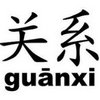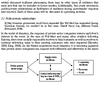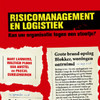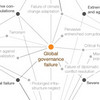 Today’s post is an extension of what I wrote yesterday, in my review of what Fu Jia and Christine Rutherford wrote in Mitigation of supply chain relational risk caused by cultural differences between China and the West, an article that is very much based on Fu Jia’s PhD, Cultural adaptation between Western buyers and Chinese suppliers, where he describes nine important types of cultural differences that Westerners need to be aware of when doing business in China. If you ignore these differences, your business ventures in China, or in much of Asia for that matter, are destined to fail miserably. Today I will present these differences in more detail.
Today’s post is an extension of what I wrote yesterday, in my review of what Fu Jia and Christine Rutherford wrote in Mitigation of supply chain relational risk caused by cultural differences between China and the West, an article that is very much based on Fu Jia’s PhD, Cultural adaptation between Western buyers and Chinese suppliers, where he describes nine important types of cultural differences that Westerners need to be aware of when doing business in China. If you ignore these differences, your business ventures in China, or in much of Asia for that matter, are destined to fail miserably. Today I will present these differences in more detail.
Connections matter, contracts do not
Fu Jia’s PhD thesis is available for download from the Cranfield University website and is well worth reading and have highly recommended if you have an academic or professional interest in Chinese culture.What it boils down to is the so-called Guanxi: connections and relations are what matter most, while contracts, rules and laws are to likely to be overridden if they are in conflict with harmonious relations.
The following is an (slightly edited) excerpt from Fu Jia’s PhD, where he describes the nine cultural differences as follows:
- Western firms using the usual arm’s length management approach will face a self-fulfilling prophecy in that they will be treated as outsiders and will be met with opportunistic, war-like and deceptive activities by their Chinese suppliers.
- The second difference is related to the different understanding of trust. Trust in China is on a person to person basis, while there also exists trust at an organization level. On the contrary, organization trust is more credible than personal trust from some Westerners’ point of view. Chinese buyers and suppliers emphasize more on trust at a personal level rather than satisfaction at an organizational level to generate partnership relationships.
- The core of Chinese society is family therefore Chinese individuals are only responsible for their families rather than the society as a whole. That is why it is accepted in Chinese culture to use deception and other war strategies to deal with outsiders (strangers or unfamiliar people), to practice Guanxi with insiders (family or pseudofamily members), and not to take laws, policies and rules seriously.
- Favor exchanges that take place between members of the Guanxi network are not solely commercial but also social, involving the exchange of renqing (social obligation) and the giving of mianzi (face in the Guanxi network) in China. The feature makes Guanxi be often named as social capital. In contrast, networking in the West is virtually associated with commercial-based corporate-to-corporate relations. The network mechanisms including reputation, incentive and punishment and transactional reciprocity are all applied at corporate level. Guanxi is essentially personal and not corporate relations.
- The Western concept of closeness or relationship magnitude is determined by trust, commitment and dependence, while closeness in China is determined by Guanxi bases. Jia-ren (family) Guanxi is closer than Shou-ren (familiar people) Guanxi, which in turn is closer than Sheng-ren (Strangers) Guanxi. The sense of social hierarchy in China indicates people should respect and follow the orders of the ones more senior in social status and older than themselves in the Guanxi network. In the West, the portfolio management dictates managing suppliers based on relative power position.
- Compared to different routing strategies of the Guanxi building process, Western forms of supply relationship management are progressive or step by step in nature. Guanxi relationship building process is more flexible in the sense that it consists of different routing strategies. The Chinese build Guanxi based on the Yin-yang principle, which is based on a different psychological process from the West. Westerners adopt a dualistic thinking in black and white, which means they normally consider that things must be one way or the other.
- The construct of control is unique to Western forms of supply relationship management, but control works with the Chinese only if Guanxi has been set up. Without Guanxi, the control may not work with the Chinese because they do not think contracts are as important as relationships. Therefore control may not be as effective as Western firms think it will be and the Chinese supplier may as a result use deceitful tactics to deal with the Westerners.
- Exchange of information and collaboration in China is confined to a person to person basis and within the Guanxi network. The aim of exchange of information and collaboration is for the benefit of self or his/her family. In the West, exchange of information and collaboration are organizational behaviors.
- The aim of adaptation and interdependence in China is to maintain the harmony within the Guanxi network, while in the West firms adapt to other firms because they are dependent on, or less powerful than, other firms. It seems that they are forced to adapt. With the same thought in mind, if Western firms do not know how to maintain harmony with Chinese firms and try to force Chinese firms to do something, they would be treated as outsiders.
On a personal note, while I do not have any business relations with Chinese, I do have personal relations, and much of the above is very familiar, since it does not only pervade business life and customs, it also pervades personal life and social customs. Guanxi is akin to Adam Smith’s invisible hand, guiding all decisions.
Reference
Jia, Fu (2009). Cultural adaptation between Western buyers and Chinese suppliers. PhD thesis, Cranfield University, UK.
Author link
- exeter.ac.uk: Fu Jia
Download
- cranfield.ac.uk: Cultural adaptation between Western buyers and Chinese suppliers (Fu Jia’s PhD thesis)
Related
- husdal.com: Supply Chain Risk: Culture Shock












